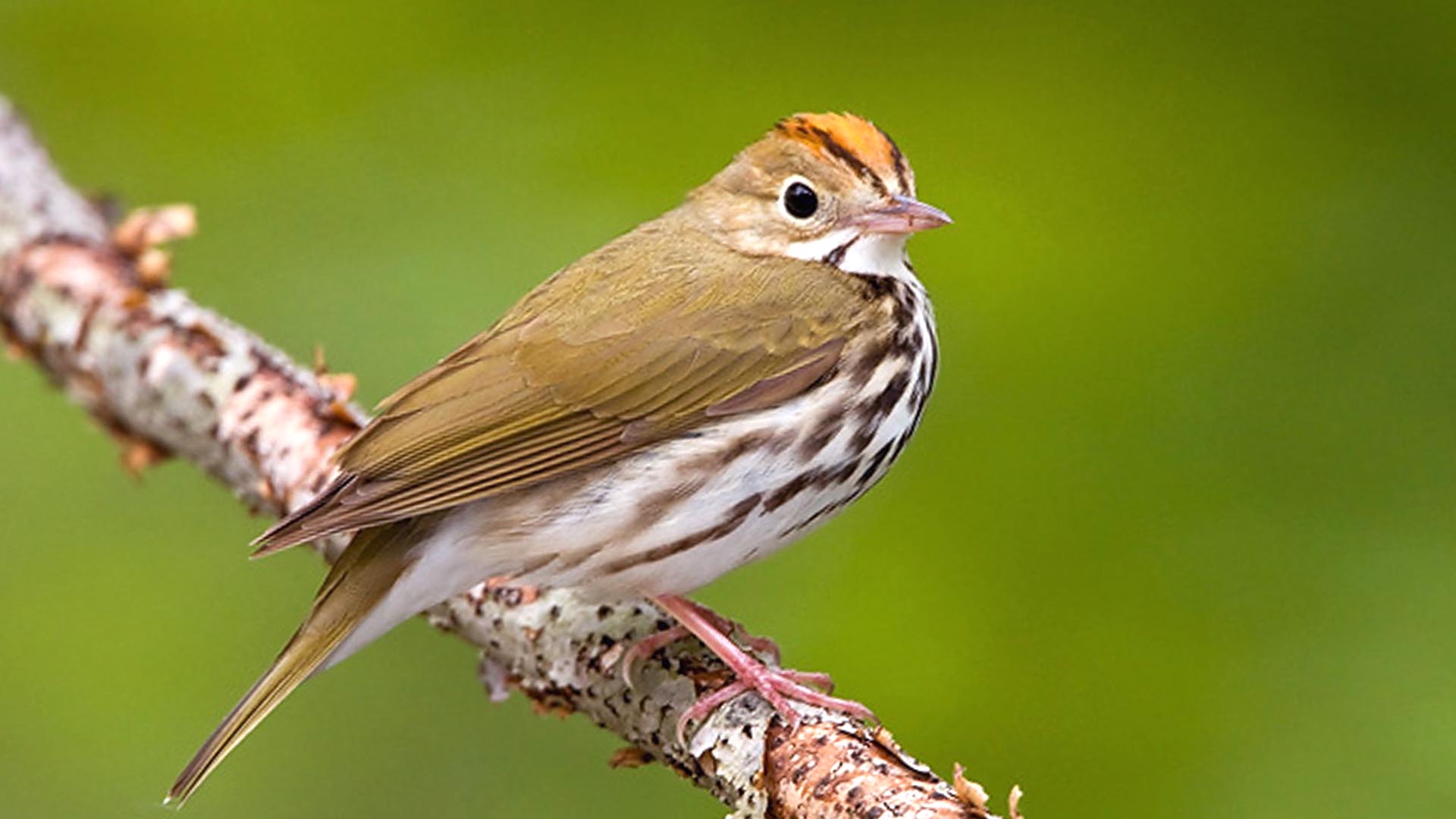Ovenbird
The ovenbird (Seiurus aurocapilla) is a small songbird of the New World warbler family Parulidae. This migratory bird breeds in eastern North America and winters in Central America, many Caribbean Islands, Florida, and northern Venezuela.
Ovenbirds are large wood warblers and is sometimes confused by the untrained for a thrush. Adults measure 11–16 cm (4.3–6.3 in) long and span 19–26 cm (7.5–10.2 in) across the wings. They weigh 19 g (0.67 oz) on average, with a range of 14–28.8 g (0.49–1.02 oz). Among standard measurements, the wing chord is 6.8 to 8.3 cm (2.7 to 3.3 in), the tail is 5 to 5.8 cm (2.0 to 2.3 in), the bill is 1.1 to 1.3 cm (0.43 to 0.51 in) and the tarsus is 2 to 2.3 cm (0.79 to 0.91 in). They tend to be heavier in winter and particularly at the start of their migration. They have olive-brown upperparts and white underparts heavily streaked with black; the flanks have an olive hue. A white ring surrounds the eyes, and a black stripe runs below the cheek. They have a line of orange feathers with olive-green tips running along the top of their head, bordered on each side with blackish-brown. The orange feathers can be erected to form a small crest. The eyes and the upper part of the thin pointed beak are dark, while the lower beak is horn-colored and the legs and feet are pinkish.
Males and females look alike. Immature birds have tawny fringes to the tertiary remiges and sometimes buff-tipped outer primary wing coverts. Most conspicuously, the olive-green tips of the crown feathers, which are hardly visible in adult birds, are far larger in extent in immatures and cover the orange crown-stripe almost or completely.


